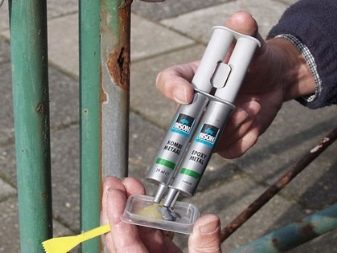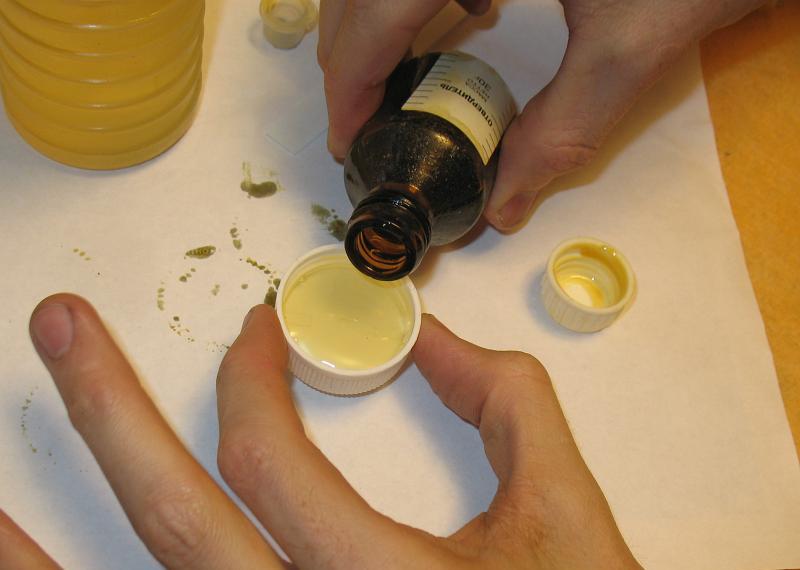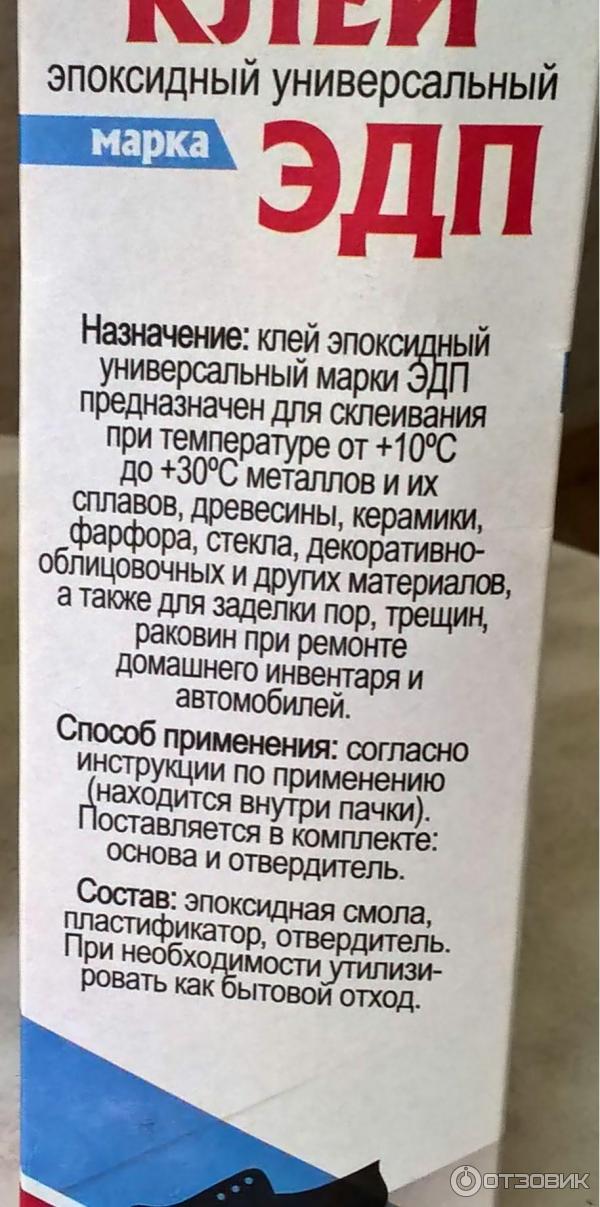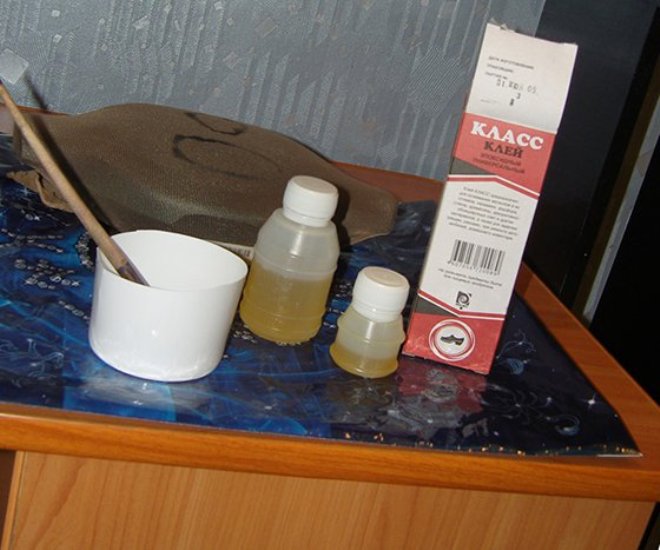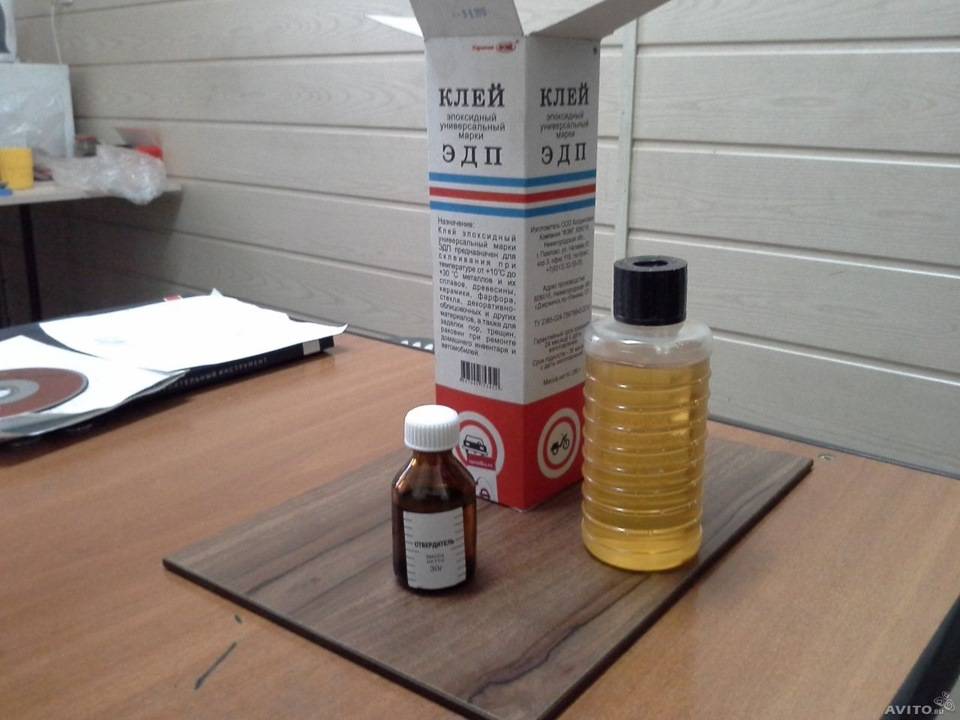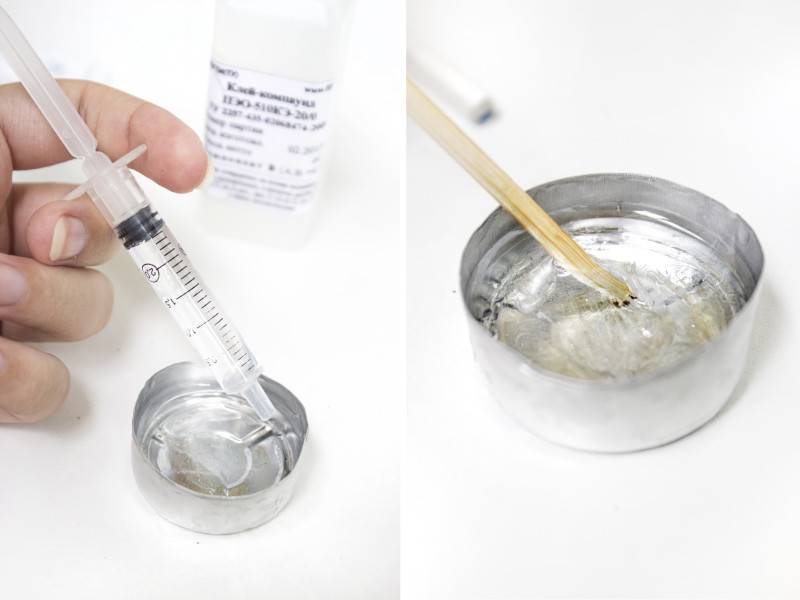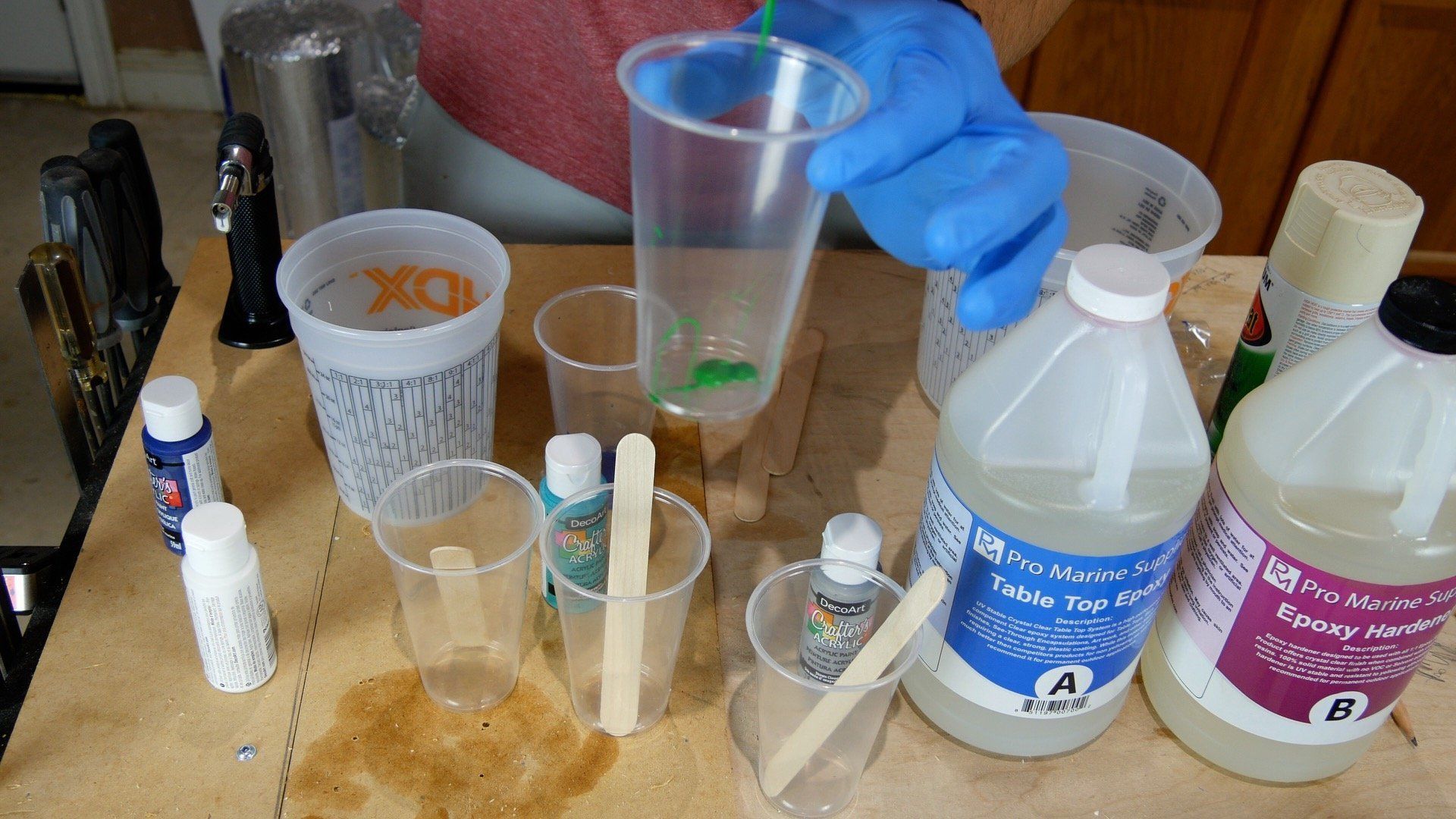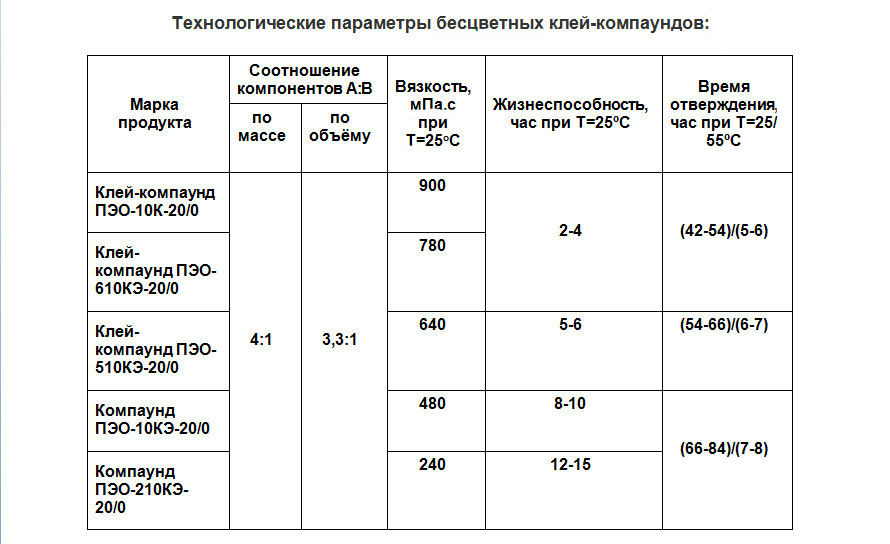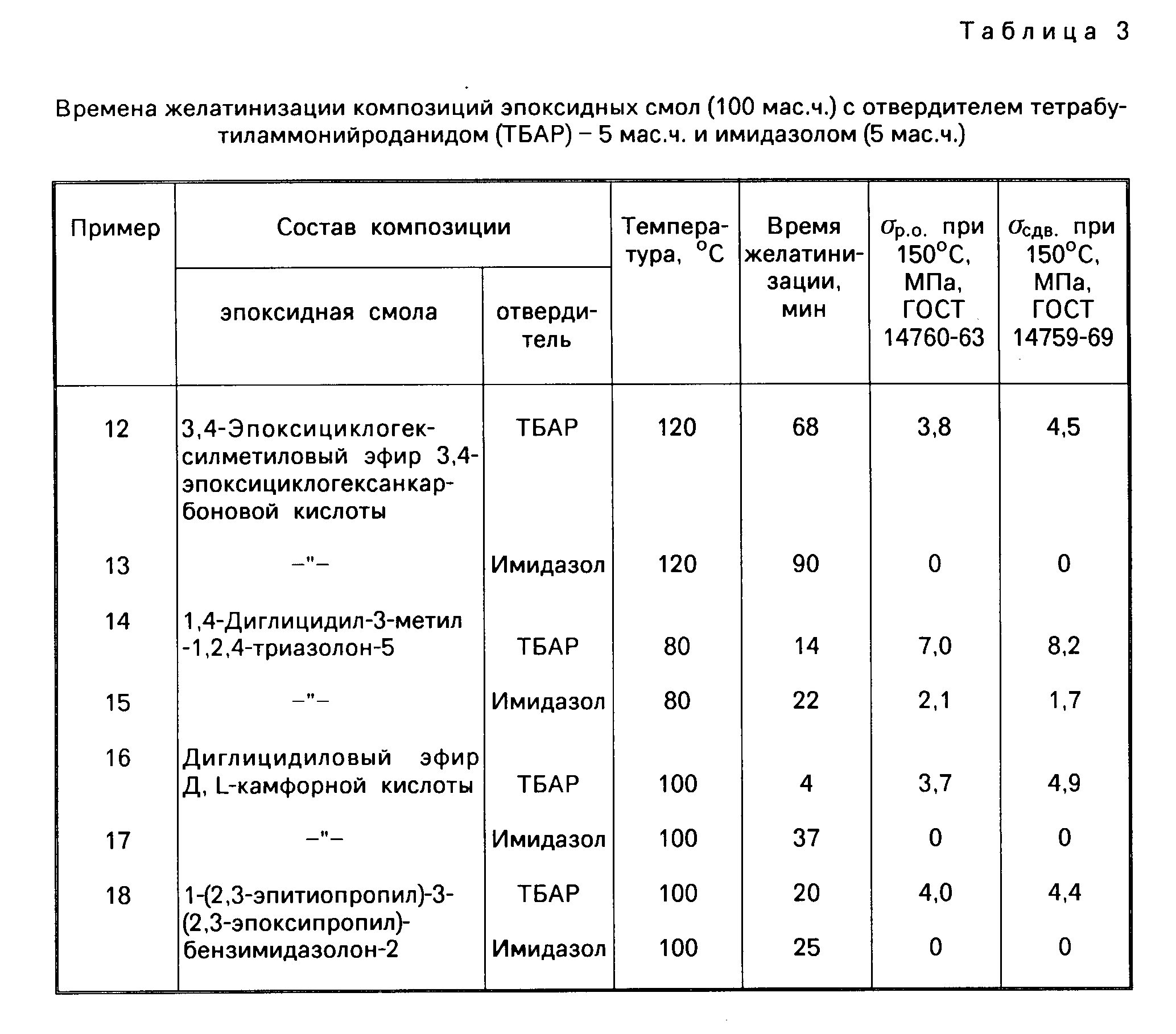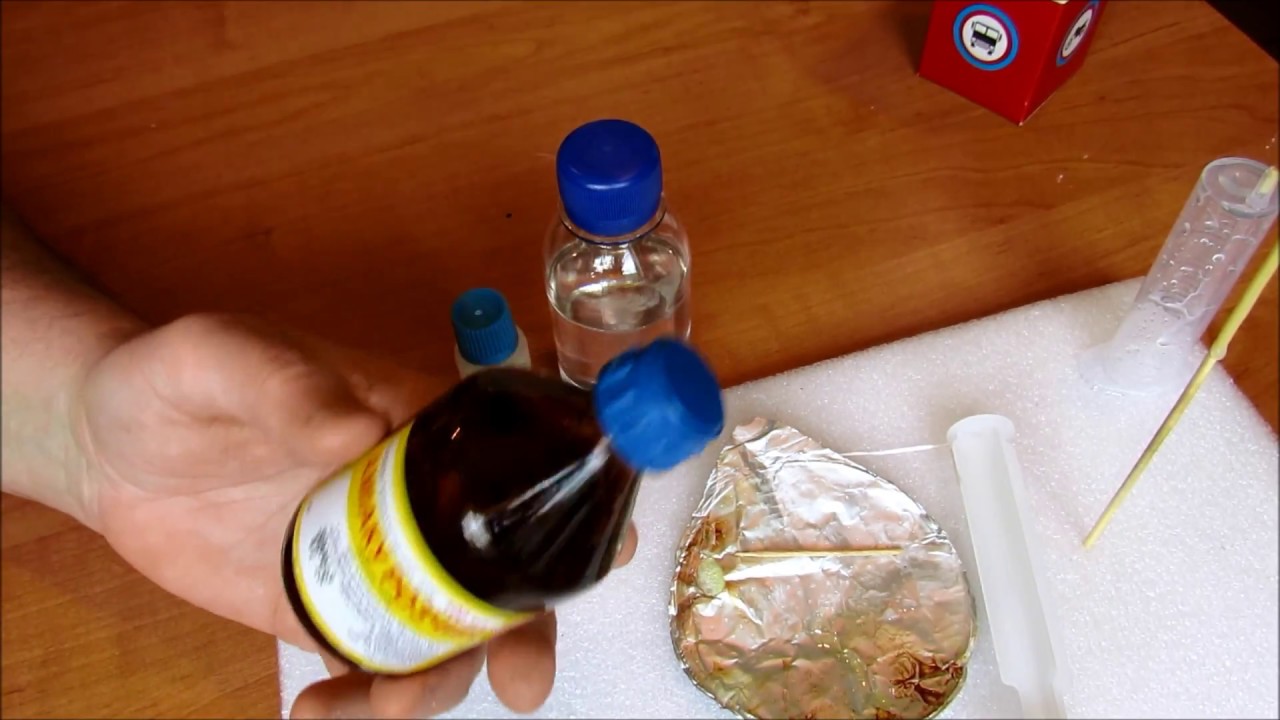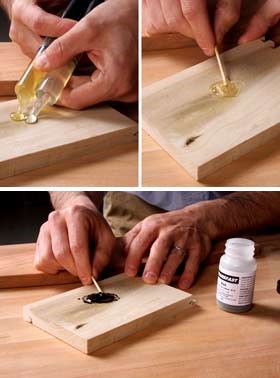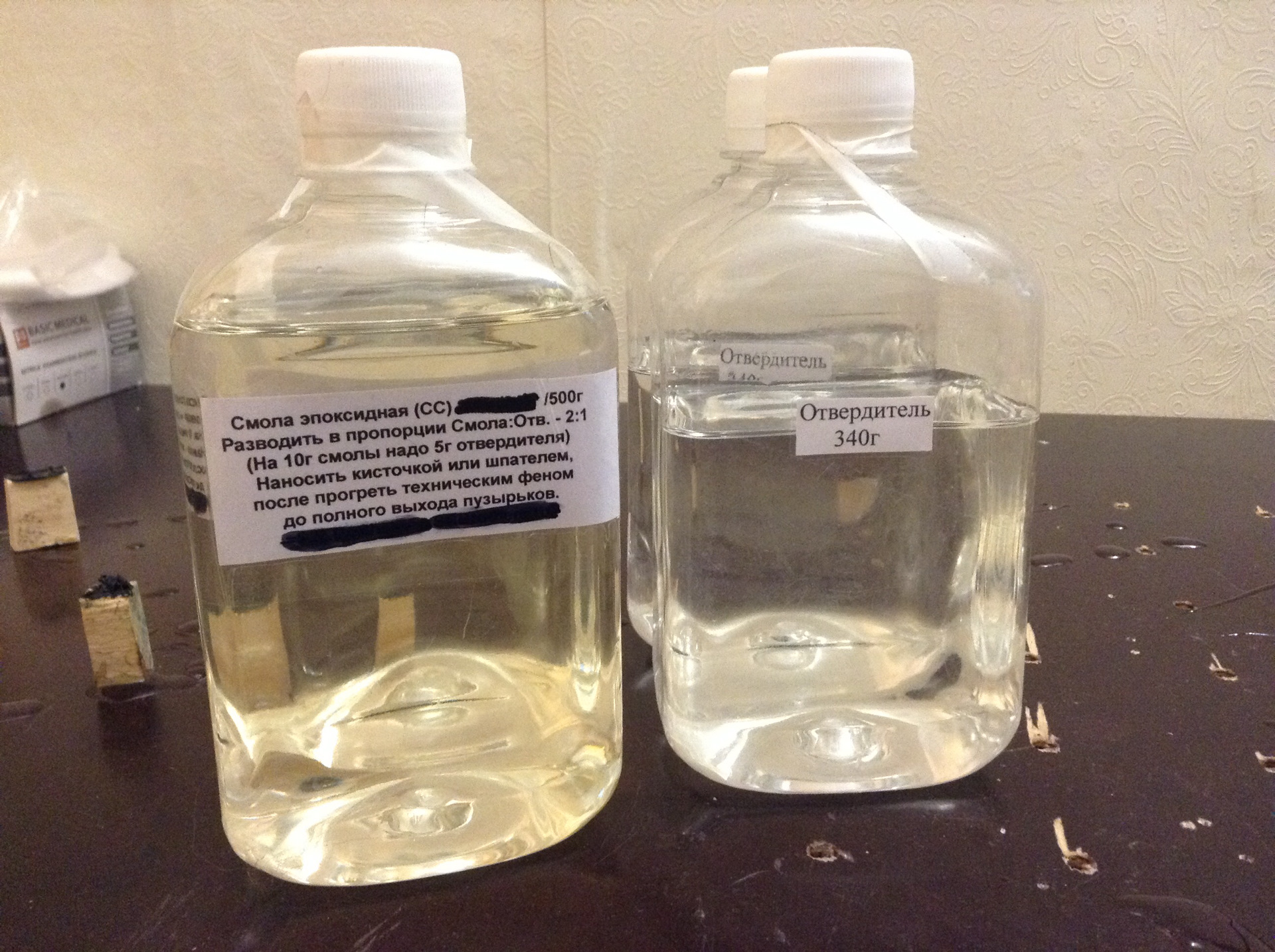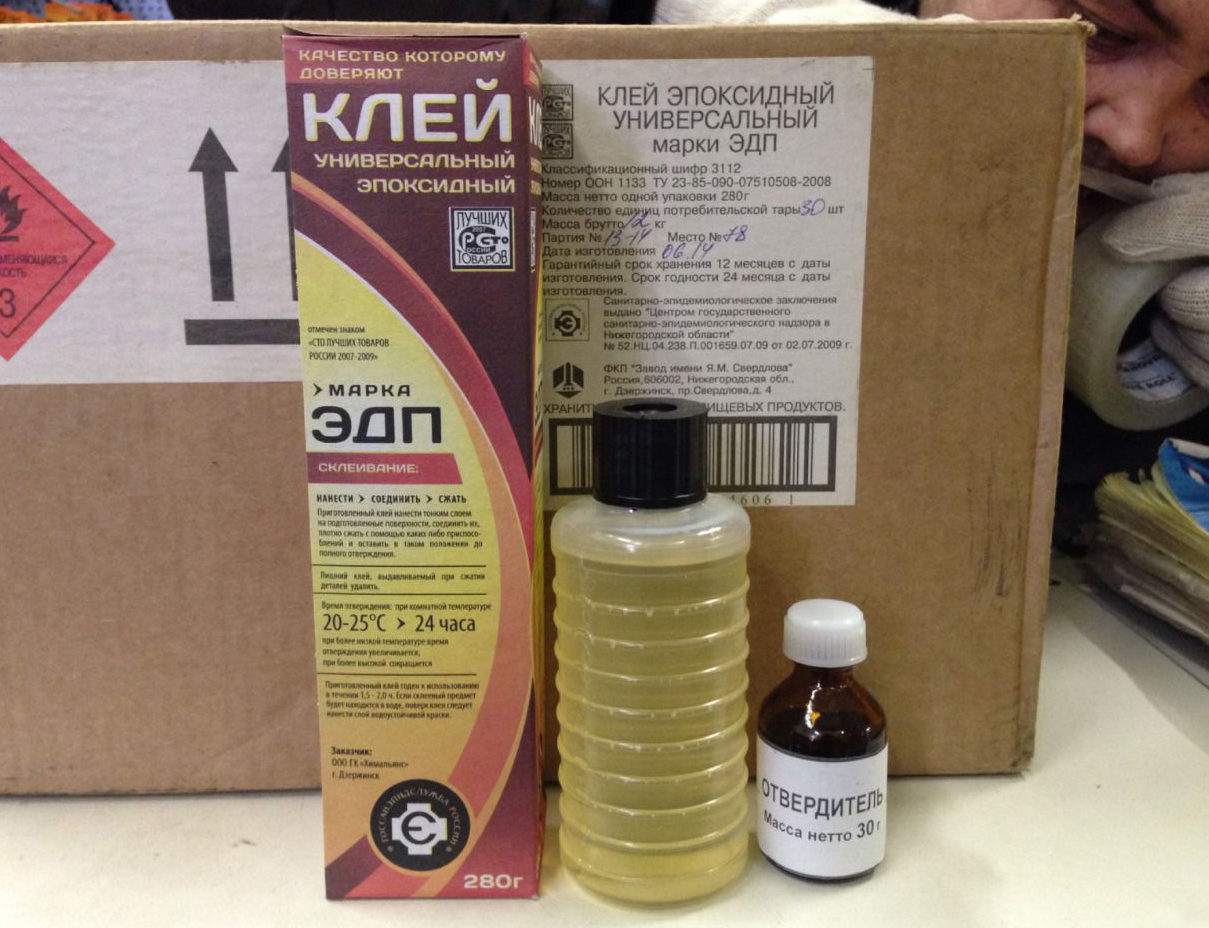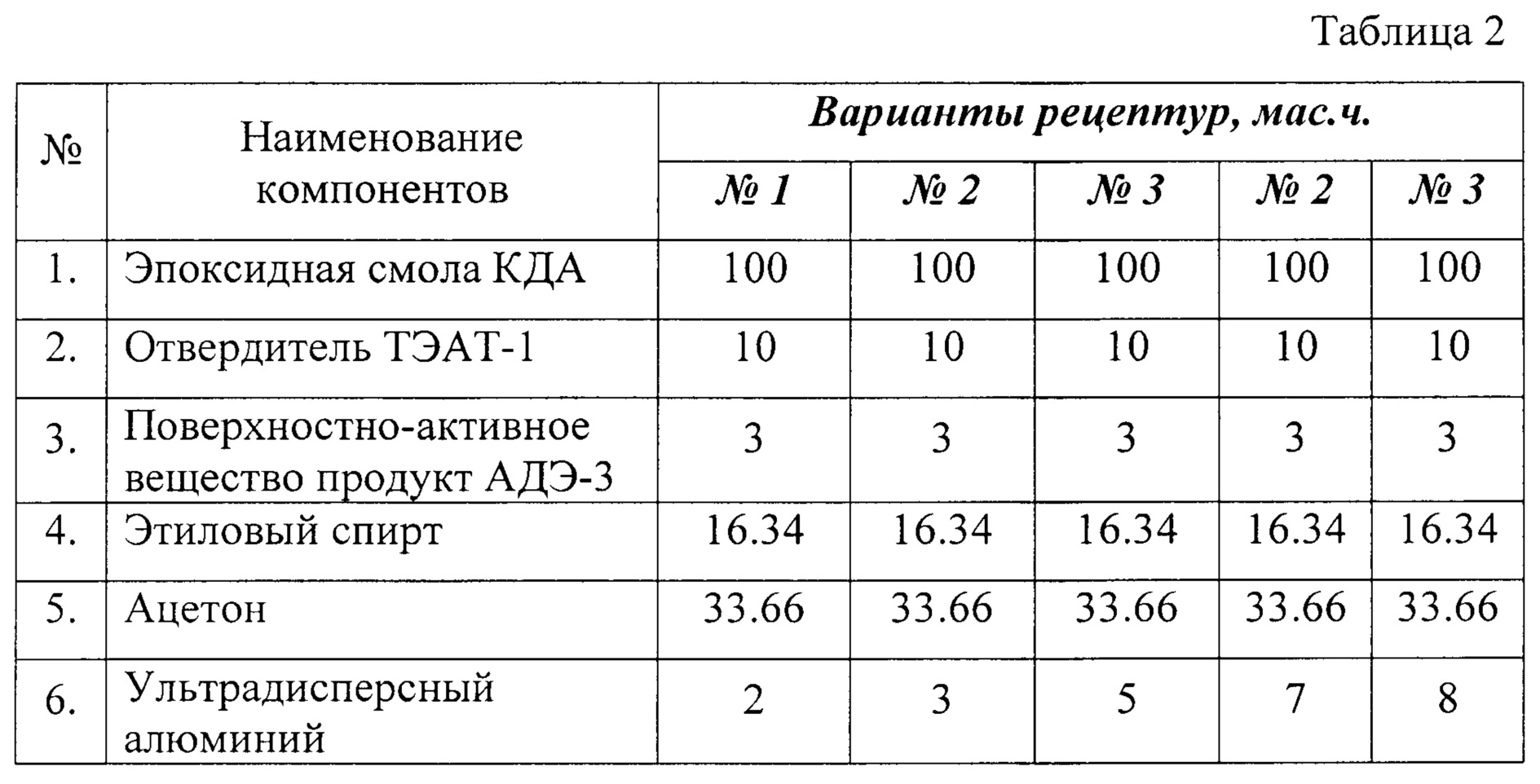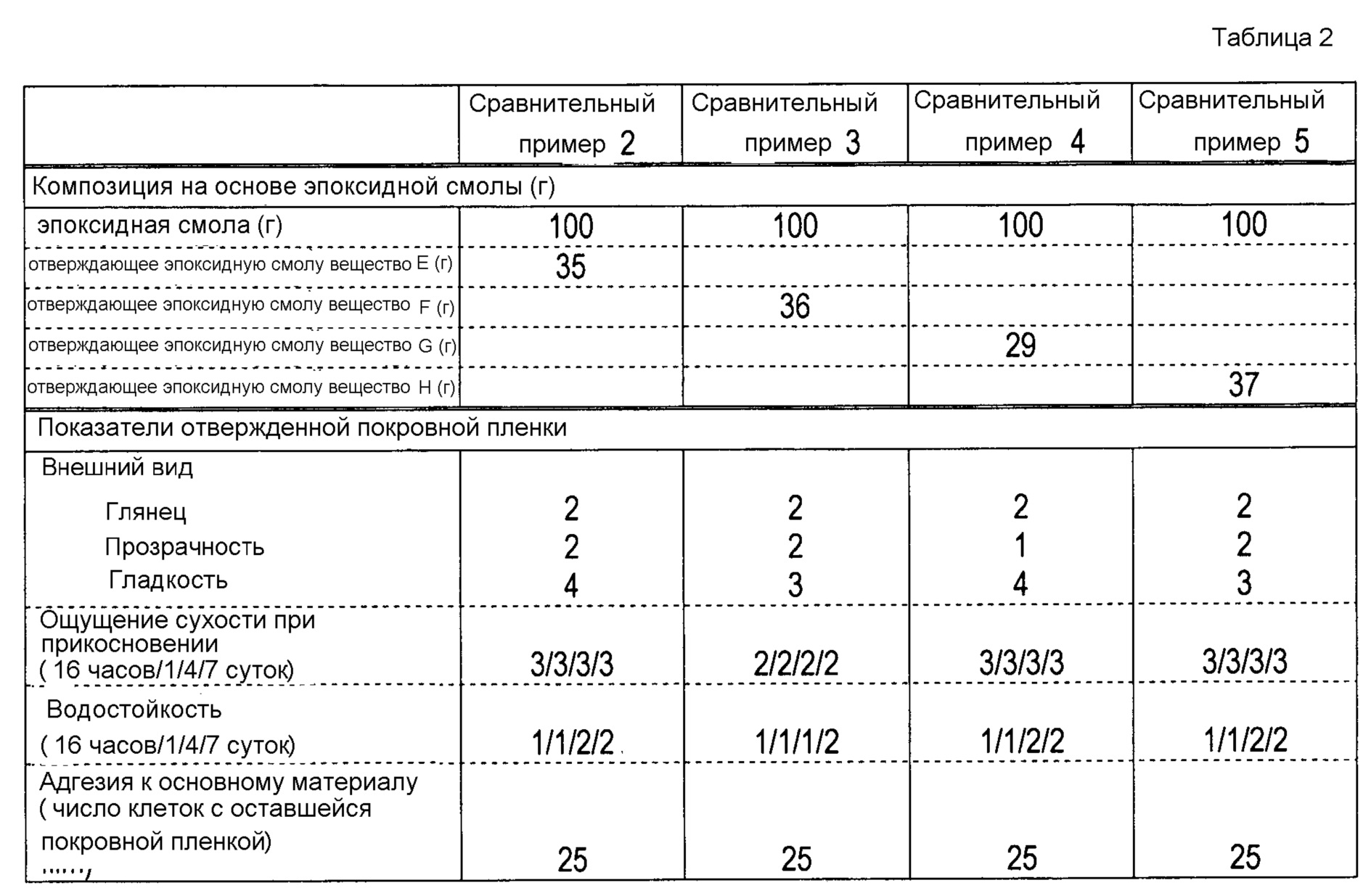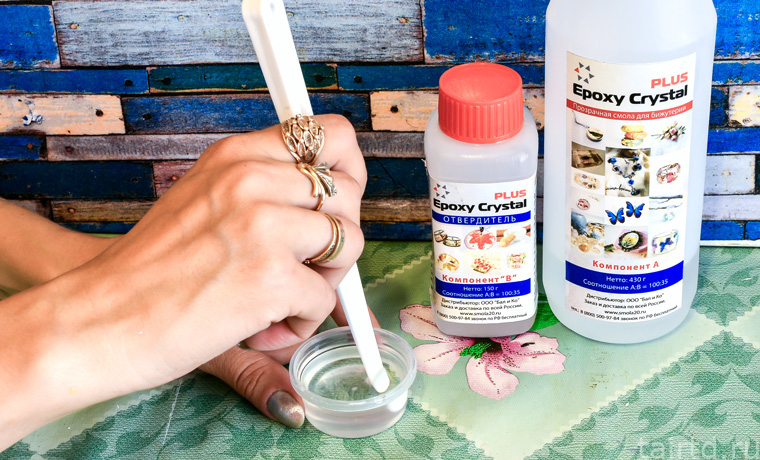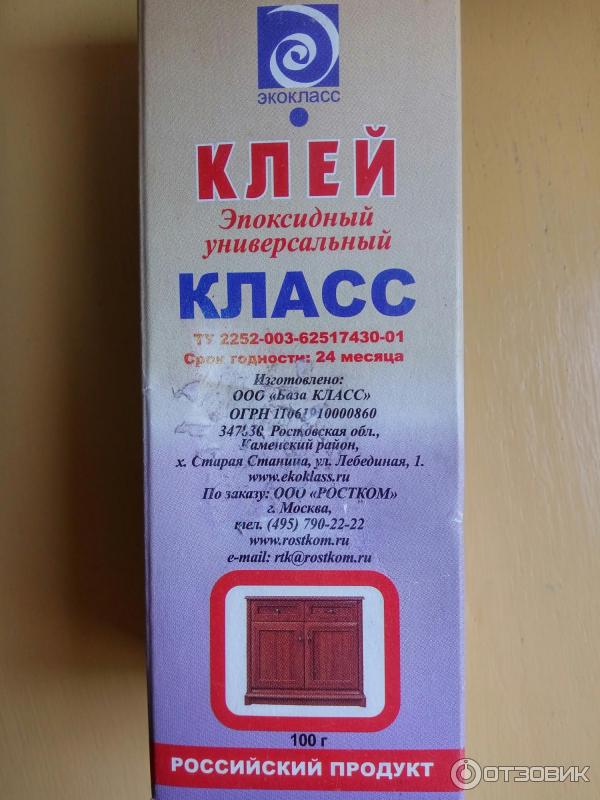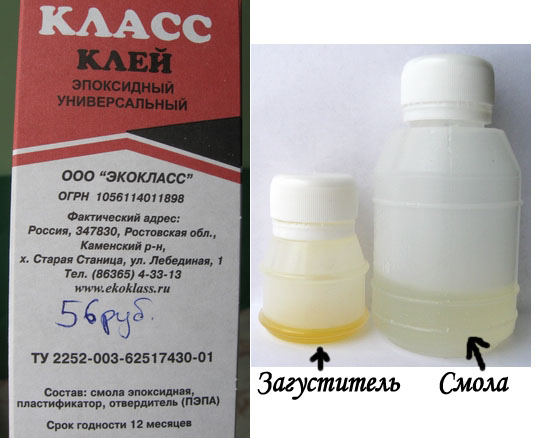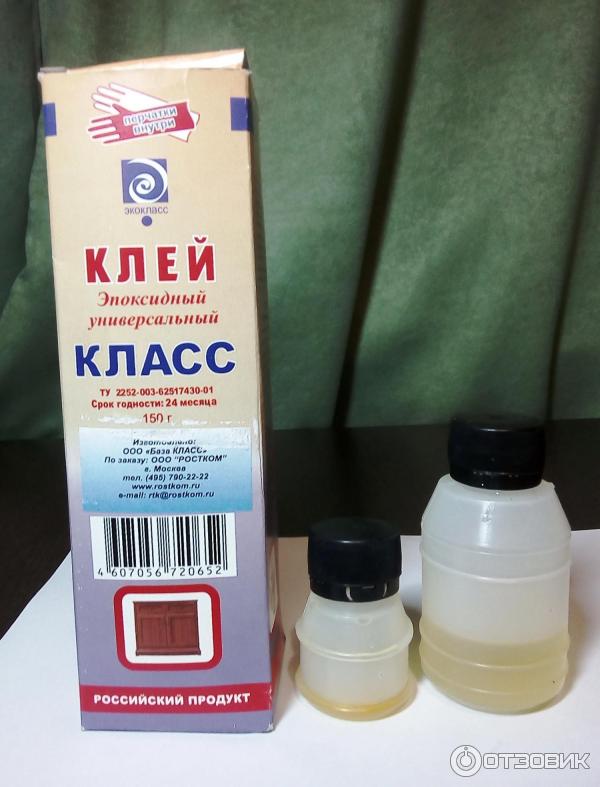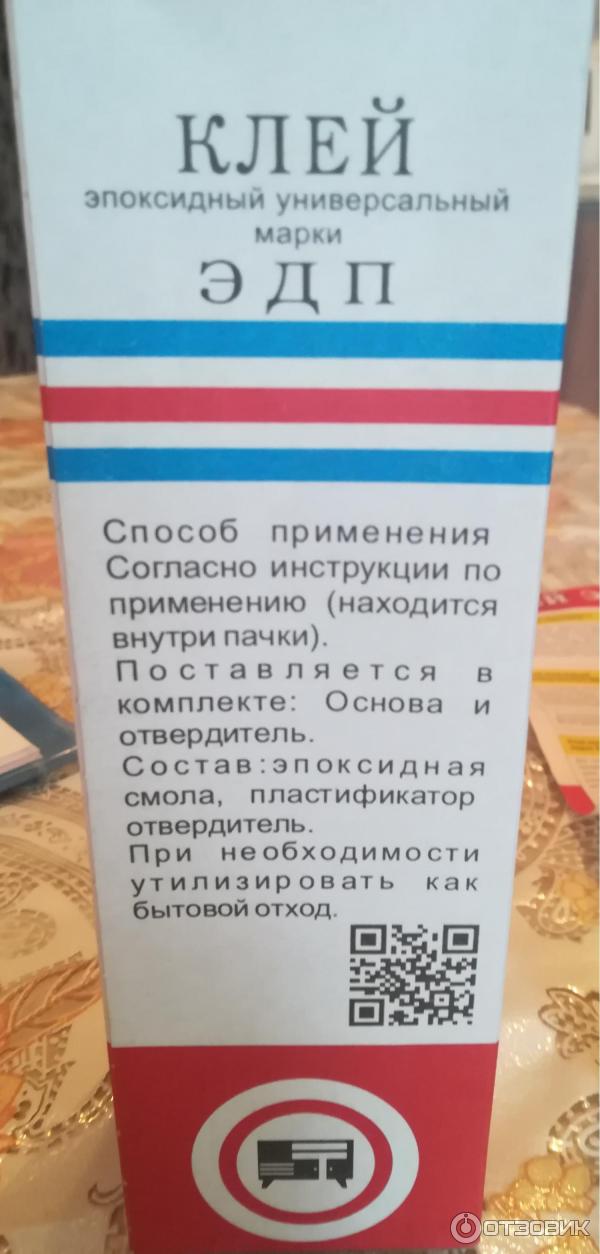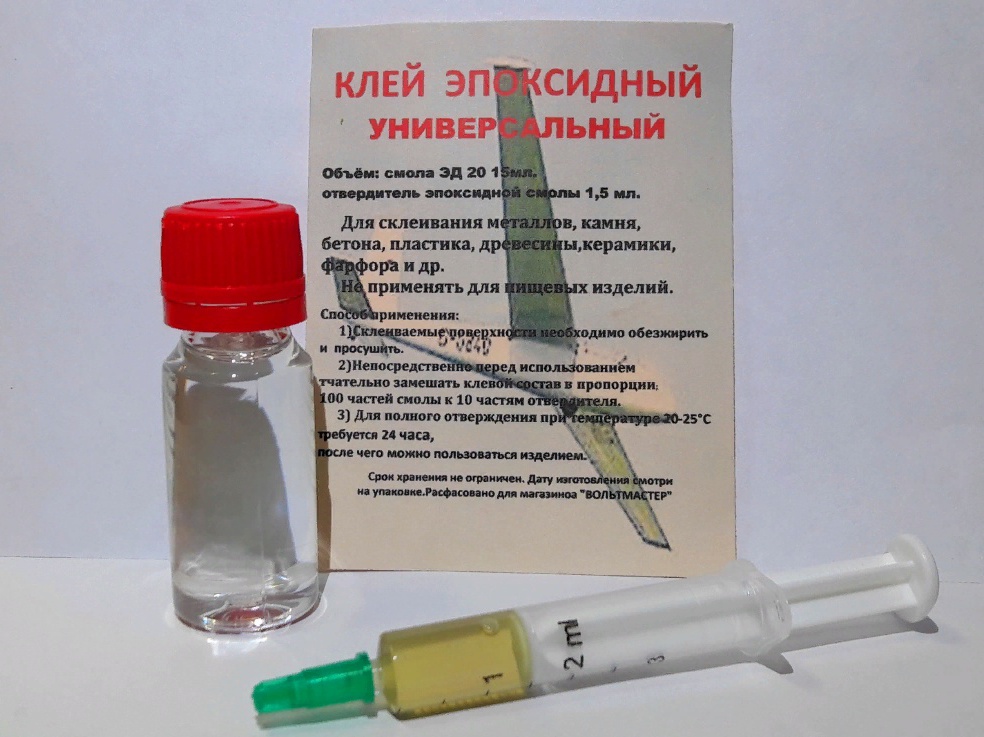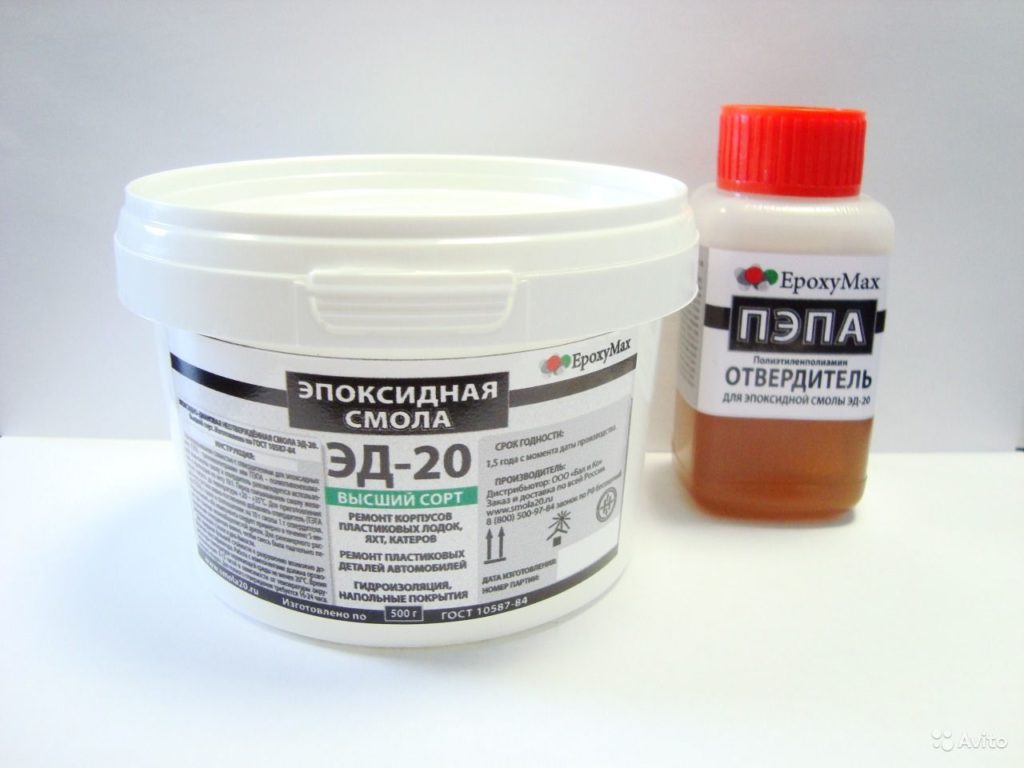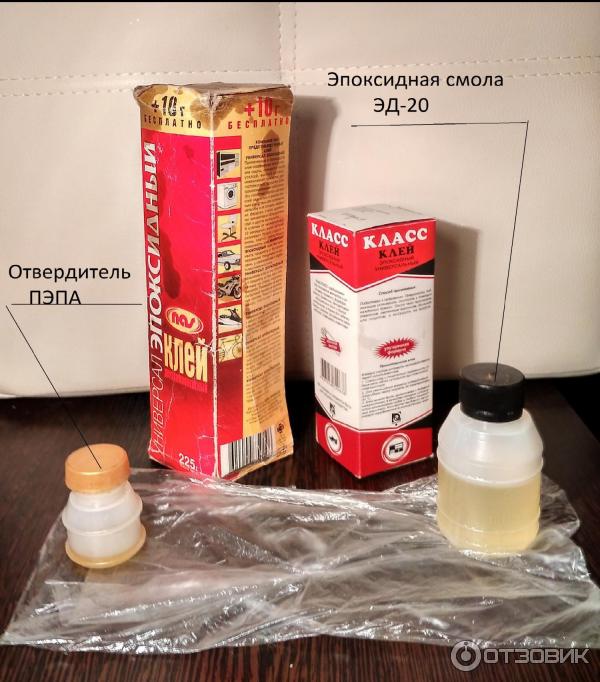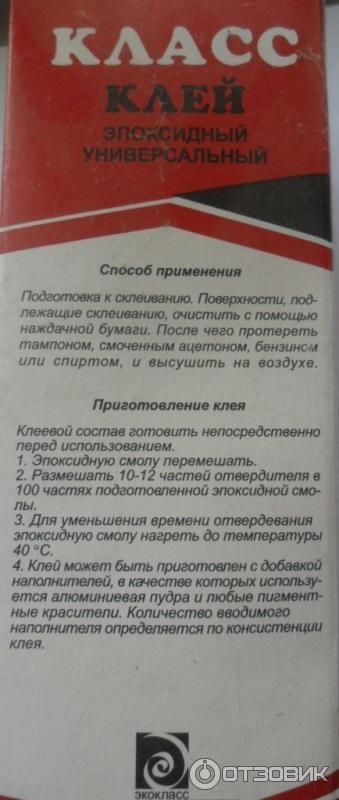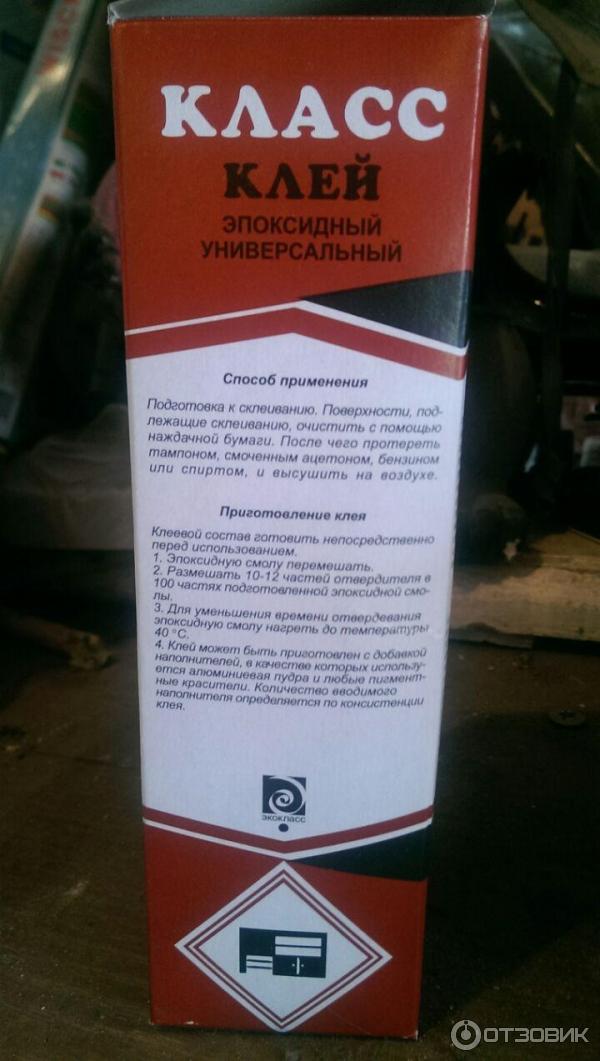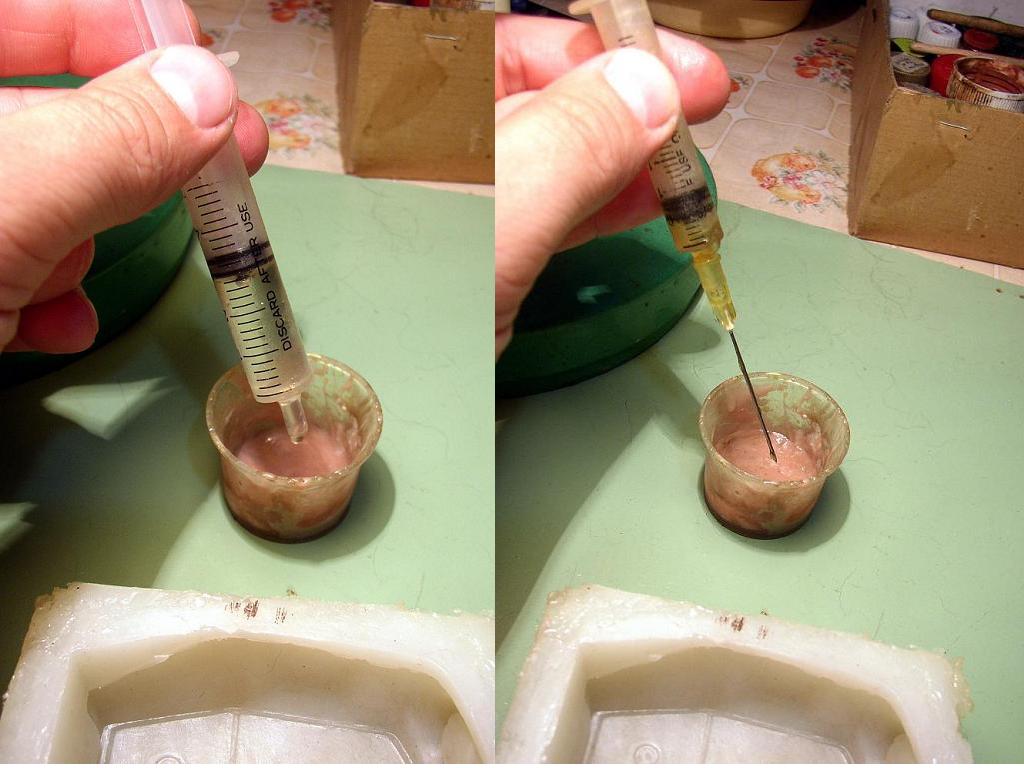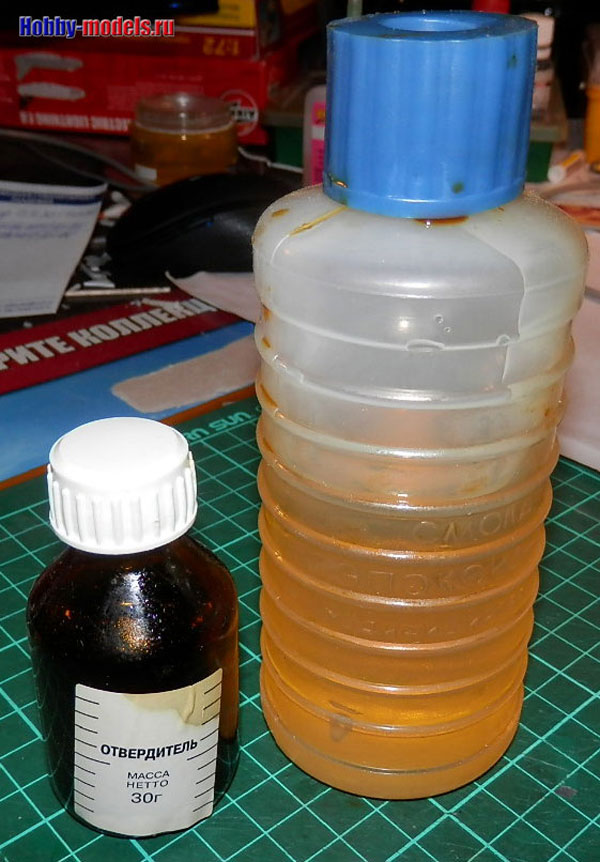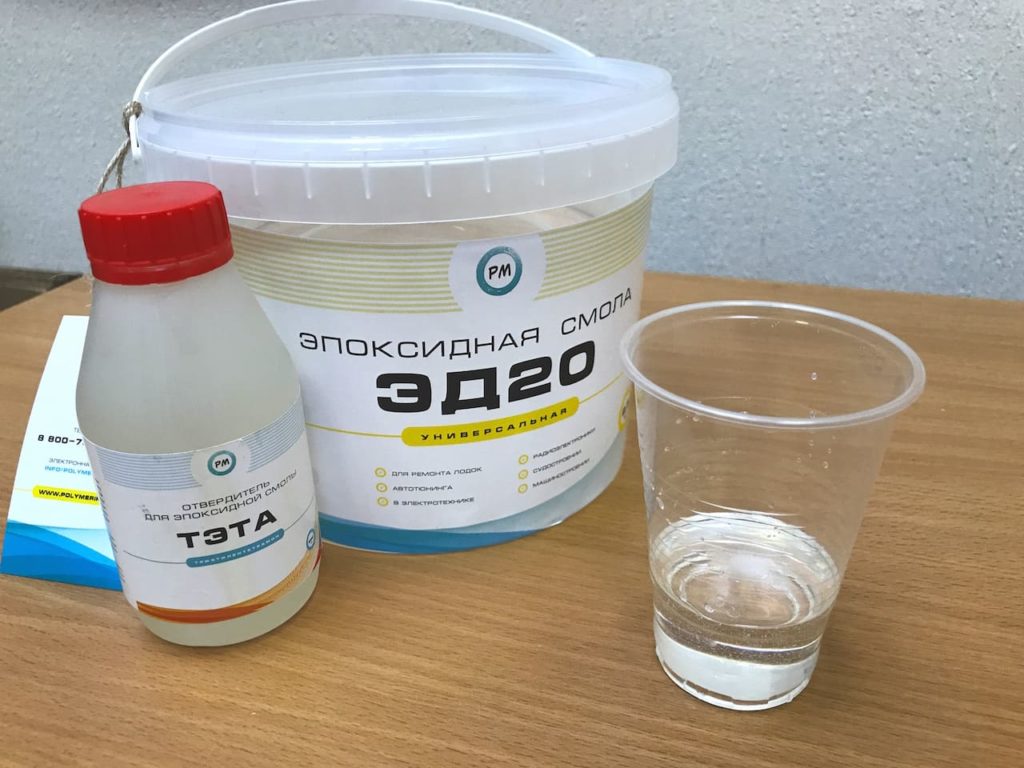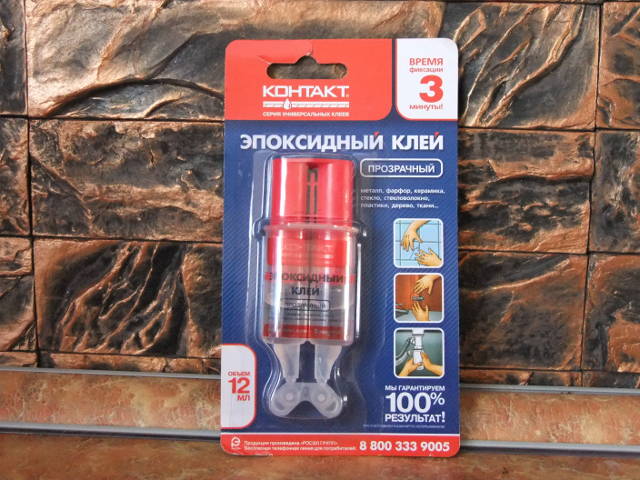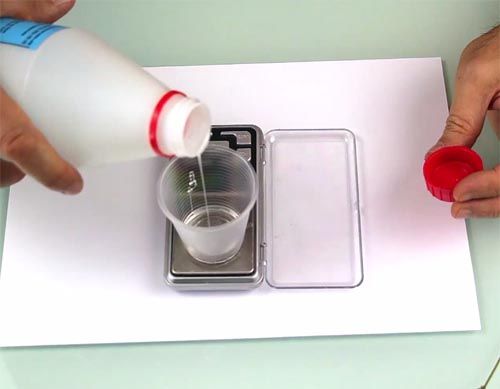Modern formulations
What can replace the described means? Modified hardeners are devoid of most of the disadvantages of traditional ones, but their price is much higher. The finished products will have higher strength properties, since the resin is polymerized more completely. Funds act as plasticizers - in some cases they are able to dilute and plasticize epoxy.
M-4
Hardener М 4 - modified type amine hardener, liquid with high viscosity, color - red-brown. M4 must be mixed with epoxy resin in the amount of 20 - 25% of the base material. The substance is capable of curing epoxy even at a temperature of + 2 ... + 5 degrees - this will not interfere with obtaining a product of increased strength.
The fast curing agent is made on the basis of PEPA, improved in composition and properties. In addition to cold curing, if necessary, you can do hot curing with M4. The time of plasticization and gelatinization at room temperature will be 30-50 minutes, at lower temperatures it will increase.
Hardener 921
In the 921 series, several types of hardeners are sold - 921, 921 OP, 921 T. These are low-viscosity agents that allow you to obtain unique epoxy compositions with high resistance to damage and UV radiation.
Finished products will not fade from the sun, which not all hardeners can provide. Most often 921 is used for covering yachts and boats, as it can be applied in a layer up to 0.5 cm thick. The product is capable of hardening even thick layers of epoxy - up to 10 cm. For operation, it must be mixed in a volume of 45 - 55% of the resin mass.
Hardener 620
UP-620 is a highly active agent that can cure resin even in high humidity conditions. It is added to epoxy in a small volume - only 15 - 18%, which is enough to obtain cold polymerisation fillings.
The product is used in the composition of compounds, binders for plastic, self-leveling floor. It is allowed to use a hardener at temperatures from +15 degrees. The resulting products are highly moisture resistant.
Etal
Amine hardener, non-toxic, no pungent odor. Designed for the polymerization of epoxies and compounds at any humidity, temperature, starting from -20 degrees. It is one of the most modern means, together with epoxy resin, it is used for the following purposes:
- anti-corrosion coating of metal - pipes, floors, roofs, containers;
- repair of metal, plastic, fiberglass products;
- sealing of electrical products;
- creation of fillings and impregnations;
- production of adhesives resistant to acids and alkalis.
AF-2
The product is based on aminophenol. It is a mixed product - the result of the combination of phenol, formaldehyde, amine. The hardener allows the resin to be cold polymerized under the most adverse conditions - high humidity and low temperature. It is added to the resin in an amount of 20 - 25%, at room temperature it cures in 24 hours.
Preparation and use
To start using epoxy for coating, the surface must be thoroughly prepared. Failure to comply with this condition will not achieve the required adhesion. First, the surface must be degreased and free from traces of oil products. For this, solvents and strong detergents can be used. Then, if necessary, you will need to remove the gloss, if any. The top layer is removed by sanding.If the surface area is small, then this is done by hand using sandpaper. If it is necessary to grind the surface of a considerable area, for example, several tens of square meters, then a special grinding machine will be required. After processing, the dust is collected with a vacuum cleaner.
In the process of manufacturing a fiberglass product, as well as if layer-by-layer laying of a self-leveling epoxy floor, paint and varnish is required, before applying the next coating, the previous one should not completely solidify, but be still sticky and underdried. Sanding a very fine fraction of the lower layer (substrate) has a good effect. But such a technique can be applied only in cases where it does not contradict the requirements of the product manufacturing technology. When the epoxy has hardened, the excess sand is removed and another coat of epoxy is applied.
In order to properly manufacture this material in a large volume, you need to know the features and specific properties of the epoxy. The larger the volume of epoxy, the stronger the thermal reaction occurs, that is, more heat is released. If boiling occurs, the resin will foam, turn white and become cloudy. Such a composition is not suitable for use. To reduce the viscosity, epoxy is mixed with special compounds - solvents or thinners. Subsequently, they can sweat out of the finished material, and ultimately the quality of the polymer product from such a mixture will be worse. Even a small amount of thinners negatively affects the heat resistance of the resulting product and its strength.
Room temperature
Professionals advise working with this material at a room temperature of at least 23 degrees above zero. There are resins on the market, this usually concerns paints and varnishes, work with which can take place in a microclimate of +15 degrees. This information can be found on the product packaging.
According to the idea, the curing of these species will take a long time, about a month. Therefore, in order to improve sales, the manufacturer prepares elements for acceleration and polymerization for polyesters of this type in such a way that their dilution even at such temperature indicators triggers the self-heating process, and the process is carried out within an acceptable time frame. They can be varied by changing the ratio of the accelerator
It is important to follow the instructions here.
How to dilute polyester resin with a hardener, the procedure for introducing all the necessary additives includes:
It is necessary to accurately measure the amount of resin and accelerator (if it was not added earlier before the sale), you can find out by examining the packaging, these details must be written on it.
Mix them together, do not move vigorously, so as not to cause the formation of unnecessary air bubbles, mixing time should be spent 3-5 minutes.
Add a curing initiator, mixing should last three minutes, if the climatic conditions of the room are hotter than standard, then it takes less time.
They proceed to pouring the composition into molds, or pouring it over the surface, it is important to do this 10-12 minutes before proceeding to the gelatinization stage.
To speed up the transition to the next stage, the temperature in the room must be increased, and, conversely, to slow down, it must be lowered.
Primary hardening will occur in 14 hours - a day.
 Primary hardening will occur in 14 hours - a day.
Primary hardening will occur in 14 hours - a day.
Epoxy staining.
How to paint epoxy? There are different ways to paint epoxy with different colors and for different needs. These needs can be roughly divided into two types: decorative and technical.
Epoxy decorative painting.
Decorative painting of epoxy means painting it in any color, adding and mixing in any quantities special industrial oil-based dyes for the sake of aesthetic characteristics. And as a result, neglecting the hardness and strength of the product. That is, here the aesthetic properties of an epoxy product (color, shade) and not mechanical properties (strength, hardness) are in the first place. Epoxy decorative coloring is used mainly in the manufacture of all kinds of hand-made souvenirs and jewelry, decorative crafts, etc.It should be said that the amount of added dye should not exceed 10% of the amount of epoxy. More is possible, but then the product will be too fragile or soft. For uniform coloring of the epoxy, first you need to add the dye to the resin and stir, and then add the hardener.
Epoxy technical paint.
The technical coloring of epoxy implies the addition of special dyes to it in small quantities, which do not change its hardness and strength. Naturally, in this case, the palette is scarce, but the goal here is no longer glamor, but industrial design and technical aesthetics while maintaining durability. So, for example, adding a small amount of printing toner to the resin will paint the product black without changing its hardness. However, it is better not to paint critical and loaded adhesive joints and epoxy resin products at all. Or, if you really need aesthetics, paint it superficially.
How to properly dilute glue with hardener?
Contact with the hardener is necessary to start the polymerization process and convert the liquid into a solid. The exception is one-component formulations, which do not need to be diluted. The one-part adhesive contains solvents that keep it liquid until it is exposed to air. After the one-part compound is applied to the bonding site, volatile solvents evaporate quickly, hardening.
In contrast, two-component polymerizations require special curing additives. They are mixed with the bulk to a homogeneous consistency and left to solidify.
Mixing by eye
Craftsmen who often work with epoxy glue memorize the ratio of the components and stop using volumetric dishes, measuring the components by eye. However, with this approach, it is easy to make a mistake and violate the ratio of the components by adding too much or, conversely, not enough curing liquid.
The first leads to rapid boiling of the mass and its rapid polymerization. In the second case, the adhesive does not harden or hardens much longer than usual, which is inconvenient to work with, and can cause the parts to be glued to move relative to each other.
In both cases, both the appearance and the strength of the resulting seam suffer. For these reasons, it is advisable to follow the instructions exactly and carefully measure the volume of the adhesive and curing agent.
Resin and hardener proportions

The proportions of resin and hardener vary depending on the brand of adhesive. This information is usually indicated on its packaging or in the attached instructions. Some manufacturers pack the components in the correct proportions into special double syringes, one part of which contains glue and the other part contains a hardening liquid. In this case, there is no need to observe the proportions: the components are simply squeezed out in the right amount into some container and mixed.
The same can be said for dense varieties of epoxies. They are in bars of the required volume, which you just need to knead well with your hands, like plasticine.
If the base and hardener are sold in regular bottles, then they will have to be measured in the indicated proportions before mixing. They can be different. For example, one of the cheapest varieties of universal construction epoxy glue EDP has a ratio of the main component to the hardener equal to 10: 1 or 10: 1.3. Other brands require different ratios, for example, 1: 5, so before starting work, you must carefully study the instructions for use of a particular adhesive.
Determination of the required volume
It is convenient to measure the required volume of base liquid and hardener using a graduated measuring cup, and for small portions - with a syringe. Each component requires a separate container or syringe.
When the glue has the consistency of resin or gel, it can be difficult to draw through the syringe tip even with the needle removed. In this situation, the plunger should be pulled out of the housing and the compound should be poured through its wide upper part, after plugging the tip of the syringe with a match or a toothpick. The piston is then carefully inserted into the housing. The hardener is usually more fluid and can be drawn into the syringe in the usual way.
For another method of measuring, you will need an electronic jewelry scale. The technique is simple: a container is placed on the scale in which it is planned to mix the glue, and, adjusted for its weight, the required amount of the main component is poured. Then the hardener is added to the same container. The scale will show how much liquid needs to be added.
How to mix at home?
To mix the glue at home, you need to prepare for the process. It is recommended to carry out work in a well-ventilated area - inhalation of epoxy vapors is unlikely to benefit the body. It will be useful to put on a respirator. For work, it is worth using protective gloves. You should put on old clothes and cover the workplace with something - it will be extremely difficult to clean the glue on them.
How to cook?
It is necessary to measure the ingredients in the required quantities. At home, it is very convenient to do this in medical syringes, since they have graduated marks. In addition, the syringe will allow you to carry out the procedure accurately and take even small amounts of substances in the required dosage. You do not need to insert the needle into the syringe. Resin and hardener should be drawn up with separate syringes and placed in separate containers. If the resin is too thick, then you can pour it into the syringe from above, after removing the plunger and closing the spout. Then both substances are thoroughly mixed to obtain a homogeneous mass.
Each mass is also mixed with a separate tool. Epoxy can be difficult to mix due to its high viscosity. To facilitate the process, it is heated using a water bath. The heated resin mixes more easily, but the temperature should not be higher than + 55–60 ° С, as the polymerization process will accelerate. And you should also be careful not to get water into the resin.
Ratio rates
The correct proportions of ingredients should be used to get the proper quality formulation. Manufacturers, as a rule, indicate them in the instructions for use. Most often, this ratio is 10 parts resin to 1-1.3 parts hardener. For some resins, other proportions may be specified. The instructions should be followed literally. It happens that the instruction is not spelled out or is lost. In these cases, take 10 parts of resin and 1 part of hardener.
If you are not sure of the correct ratio of ingredients, the composition can be checked
Take a little of the prepared mixture with the hardener and place it in a small metal container, and then gently heat it, but do not bring it to a boil. When the substance cools down, you can determine its quality.
If the cooled mixture has hardened, then everything is done correctly and the glue can be used. If the mixture is still viscous, there is not enough hardener in it.
How to dilute?
The prepared epoxy glue remains liquid for a very short time. It can vary from 15 minutes to half an hour (depending on the manufacturer), and then quickly thickens and hardens. Sometimes this time is not enough to get the job done. To prolong the working time with the adhesive, it can be thinned with acetone. You won't need a lot of it - you need to take one part of it in relation to the amount of resin and stir gently.
How to make it more liquid?
For some surfaces, the use of a viscous adhesive is not always convenient. Sometimes a liquid compound is needed to saturate the materials. The epoxy can be made more fluid to make the epoxy more flexible and pliable to application.
There are two ways to do this.
- Heating retains the properties of the glue, but shortens the working time with it. In addition, you can inadvertently exceed the heating temperature, then the glue will be damaged. In this case, it is advisable, if possible, to heat the surfaces to be glued. Advantages will be the preservation of the life of the adhesive and easier application.
- Adding solvent. To obtain a more liquid composition, it can be mixed not only with acetone, but also with varnish solvents, denatured alcohol. By extending the life of the epoxy, they can change its color and damage the surface. And also resin shrinkage and a decrease in its strength may occur.
How to achieve a transparent color?
Sometimes the color of the adhesive is important. In some cases, a transparent compound is needed to hide traces of repairs, such as jewelry. Such a composition may be needed when creating decor items. Modern industry offers a wide range of epoxies and dyes to them. With their help, you can achieve different colors, their shades and effects: any one-color, matte, fluorescent, pearlescent, with sparkles.
It is not difficult to prepare them: you need to add 5-6% of the paint in relation to the amount of resin in the composition. The same agents will make the resin transparent if dissolved up to 0.05% of the agent. As improvised means, you can use ballpoint or gel pen ink, alkyd paints. The transparency is influenced by air bubbles, so you should gently stir the composition. You can put it in a water bath, as the heating will help the bubbles come out.
Glue dilution errors
Dilution of glue is a simple procedure, so the probability of error is low
However, it is important to pay attention to factors such as:
- Temperature. Spontaneous polymerization is possible at a room temperature of at least 15–20 ° C, and when heated, its speed increases several times. For this reason, it is impossible to work with glue outdoors, in an unheated garage in winter, or having just taken out the compound from the refrigerator where it was stored. It is recommended to warm up the bonding area to speed up the hardening.
- Tight mixing container. When the adhesive and the hardener come into contact, the mixture heats up. In narrow containers, there are no conditions for evacuating excess heat, so the mixture can boil and burn your hands.
- Violation of the ratio of components. Do not overfill the hardener to speed up the curing process. In this case, polymerization occurs faster, but at the expense of the strength of the gluing site. In addition, with this tactic, the curing liquid runs out before the adhesive and has to be purchased additionally.
Advantages and disadvantages
To obtain a balanced solution, the manufacturer recommends adding the second component in a ratio of 1:10. All types of glue allow an increase in the concentration of the hardener to 1: 5, therefore, when completing the product for the sale, the hardener is usually added with a certain margin so that the user has a reserve.
Working with epoxy glue requires special preparation of the surfaces for bonding. They are cleaned of dust and moisture. Degrease the surfaces on which the composition is to be applied in the future.
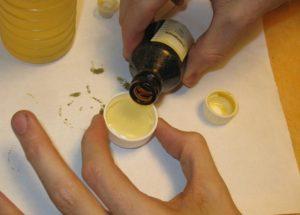
Bringing to working condition
There is one way to store the ready mix for a long time. It is cooled to a temperature of 0 ... 3 ° C, and then placed in a plastic bag. Put it in the refrigerator. In this state, it can be stored for several weeks. It should only be remembered that the strength of epoxy adhesives preserved in this way decreases. In order for the strength properties to correspond to the fresh mortar, it is necessary to heat it to a temperature of more than 50 ° C.
The main advantage of epoxy is considered by most to be omnivorous. It glues the most dissimilar substances together. Along the way, the following properties are noted:
- when gluing, a seam is formed, which does not change the volume in the future (there is no shrinkage);
- no cracks are formed - this is a consequence of the elasticity inside the polymer;
- high adhesion to most natural and artificial materials;
- inertness to aggressive chemical solvents, not afraid of alkalis and oils;
- maintains flow when heated up to + 300 ... 350 ° С;
- not afraid of cooling down to - 40 ° С;
- finished joints can be processed using different tools, you can drill, grind and cut the layer with cutting tools;
- the finished layer of glue can be painted or varnished;
- epoxy resin does not conduct electric current, is used as a dielectric;
- the polymerization process takes place not only in the upper layer, it occurs throughout the mass, curing is uniform in all directions;
- by adding fillers, you can get universal adhesive mixtures;
- the seam of the adhesive layer does not allow moisture to pass through;
- in the open air it is not destroyed, even UV radiation is not dangerous for this glue;
- when filled with friction fillers, it can be used in sliding systems.
Of course, there are also disadvantages. There are few of them:
- mix the ingredients before use;
- observe safety precautions;
- keep proportions;
- work quickly enough to have time to use all the mixed mass.
What is an all-purpose epoxy adhesive made of?
Epoxy adhesive is renowned for its strength and resistance to various chemicals. This stability is due to its chemical composition. Its main component, epoxy resin, belongs to the class of synthetic resins. It is obtained by combining epichlorohydrin with diphenylolpropane, followed by the addition of sodium hydroxide and heating to 60–70 ° C. Then the mixture is defended and heated to remove water from it.

The resulting product has the appearance of a transparent liquid of yellowish or reddish tint with varying degrees of viscosity. Epoxy resin is a polyester that hardens when interacting with compounds that have a mobile hydrogen atom. Such compounds are called hardeners. The catalysts for the polymerization of epoxy resin can be:
- diamines (hexamethylenediamine, metaphenylenediamine);
- carboxylic acids;
- maleic or phthalic anhydrides of carboxylic acids.
Epoxy glue is also made on the basis of the resin of the same name, but it contains additional components. They improve its adhesive properties and make it easier to work with. Types of additives:
- curing agent (diamines, carboxylic acids or their derivatives);
- fillers (chalk, soot, metal powders);
- carbon fiber and fiberglass;
- solvents (alcohol, acetone, xylene);
- plasticizers (phthalic or phosphoric acid ester);
- modifiers;
- polymers (rubbers).
How to dilute epoxy
If you need to prepare a working solution, then there are no special problems. How to dilute epoxy glue is usually not a big problem. It is more difficult to keep the proportions.
You can read on the Internet that it is convenient to use a syringe. Then use it to measure the desired ratio. In fact, this is great stupidity. It is rather difficult to draw the thick mass into the syringe. You can try to pour it, but it is rather difficult to perform such an operation.
It is easier to use tube or plastic bottle caps when you need to make small amounts. Then a more or less definite volume is obtained. Ask the question of how to dilute with a hardener. Here you can draw it into a syringe. The consistency of this component allows liquid to be drawn in.
Remember that ratios of resin to hardener should be between 1: 6 and 1:15. The unit is the indicator of the hardener.
Preparing the glue
How to make an epoxy color composition for filling sinks or blemishes - this is often asked by novice craftsmen.When drawing up such a solution, you need to prepare an auxiliary component. Coloring is best suited (it is available in a wide range of colors). A few drops are added to the solution, resulting in a colored composition that can be filled into a mold or other space.
Masters make different decorations from such mixtures. At one time, artistic handles for shifting gears in a car were fashionable. Quite a few options were offered. There were products made with a creative approach.
How to replace the hardener if it is not enough? A similar question can be heard quite often. Vinegar essence can help. But it should be remembered that when using it, the mixture heats up quite strongly, it may even boil
Therefore, add the acidic hardener carefully, stirring with a wooden stick.
Using epoxy glue
When repairing wooden blanks in the furniture industry, such glue is used quite often. To prepare the putty, a standard solution is diluted, and then wood dust is added to it. After thoroughly mixing it, they fill in the places of the fallen knots, small damage. Then this place will be sanded, no one will see any traces of repair except the master.


